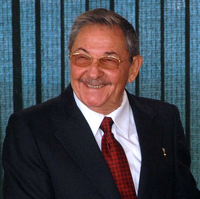HAVANA -- In Havana, the most conspicuous evidence that hostility toward the U.S. has softened can be found at the U.S. Interest Section along the Malecón promenade. When I was last here in early 2008, the gleaming white tower was camouflaged by more than a hundred billowing black flags that Fidel Castro had erected in 2006. The flags were meant to block a scrolling marquee displaying anti-Fidel, pro-America messages, installed by the Bush administration.
Nowadays, the building gets a lot more direct sunlight. After the Obama administration pulled the plug on the marquee in June, Fidel removed almost all the flags, leaving only a single row of much smaller banners that flap awkwardly atop towering, gray poles. The image illustrates the current U.S.-Cuba relationship, a fragile, quid pro quo arrangement with enormous expectations building on both sides.
In April, Obama loosened restrictions on remittances and travel for Cuban Americans -- pragmatic measures that somehow won support in Miami and Havana. Washington also sent a State Department envoy to the island to restart immigration talks. Meantime, Fidel Castro has been uncharacteristically conciliatory toward Obama, most recently by congratulating him for being awarded the Nobel Peace Prize. In a landmark July speech, Fidel's brother, President Raul Castro, suggested that Cuba should stop blaming its economic woes on Washington. Still, despite the diplomatic dance taking place, normalization will take time, and the two countries remain deeply divided on core issues.

